Astrophysicists observe one of the most powerful short gamma-ray bursts ever
Monday, 08 August 2022 11:01 The collision of two distant neutron stars released one of the most powerful short gamma-ray bursts ever recorded, scientists say.
The collision marked the first time scientists have recorded millimeter-wavelength light from a fiery explosion to be caused by the merger of a neutron star with another star. It was observed on Nov. 6, 2021.
The observation was made with the Atacama
The collision of two distant neutron stars released one of the most powerful short gamma-ray bursts ever recorded, scientists say.
The collision marked the first time scientists have recorded millimeter-wavelength light from a fiery explosion to be caused by the merger of a neutron star with another star. It was observed on Nov. 6, 2021.
The observation was made with the Atacama No trace of dark matter halos
Monday, 08 August 2022 11:01 Dwarf galaxies are small, faint galaxies that can usually be found in galaxy clusters or near larger galaxies. Because of this, they might be affected by the gravitational effects of their larger companions. "We introduce an innovative way of testing the standard model based on how much dwarf galaxies are disturbed by gravitational ,tides' from nearby larger galaxies", said Elena Asencio, a PhD
Dwarf galaxies are small, faint galaxies that can usually be found in galaxy clusters or near larger galaxies. Because of this, they might be affected by the gravitational effects of their larger companions. "We introduce an innovative way of testing the standard model based on how much dwarf galaxies are disturbed by gravitational ,tides' from nearby larger galaxies", said Elena Asencio, a PhD Madrid Flight On Chip project wraps up design process
Monday, 08 August 2022 11:01 After more than three and a half years of project, Madrid Flight On Chip (MFoC) successfully culminates providing an important milestone for the implementation of advanced technological products and introduces disruptive changes in the design and verification of complex space systems. The researchers, engineers and technicians of the consortium organizations have positioned Madrid at the forefro
After more than three and a half years of project, Madrid Flight On Chip (MFoC) successfully culminates providing an important milestone for the implementation of advanced technological products and introduces disruptive changes in the design and verification of complex space systems. The researchers, engineers and technicians of the consortium organizations have positioned Madrid at the forefro SpaceWorks RED-Rescue delivers goods key to survival in wartime
Monday, 08 August 2022 11:01 SpaceWorks successfully demonstrated RED-Rescue, its new, low-cost solution in delivering life-saving food, supplies and equipment to downed or isolated Airmen. The flight test was conducted in March near Albuquerque, NM.
The U.S. Air Force had recently challenged industry to develop capabilities that provide on-demand and cost-efficient delivery of Personnel Recovery Kits (PRKs) to downed
SpaceWorks successfully demonstrated RED-Rescue, its new, low-cost solution in delivering life-saving food, supplies and equipment to downed or isolated Airmen. The flight test was conducted in March near Albuquerque, NM.
The U.S. Air Force had recently challenged industry to develop capabilities that provide on-demand and cost-efficient delivery of Personnel Recovery Kits (PRKs) to downed Benchmark acquires Alameda Applied Science Corp. electric propulsion
Monday, 08 August 2022 09:00Benchmark Space Systems announced plans Aug. 8 to acquire Alameda Applied Science Corp.’s electric propulsion technologies, and to begin offering customers hybrid chemical-electric propulsion systems.
The post Benchmark acquires Alameda Applied Science Corp. electric propulsion appeared first on SpaceNews.
NASA heliophysics smallsats to share launch with astrophysics mission
Monday, 08 August 2022 02:34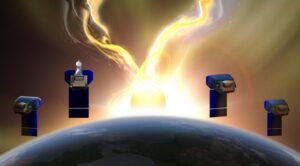
Four smallsats designed to study the solar wind will share a ride to space on a Falcon 9 with a NASA astrophysics mission in 2025.
The post NASA heliophysics smallsats to share launch with astrophysics mission appeared first on SpaceNews.
India’s new SSLV rocket suffers “data loss” in maiden flight; satellites’ status unaccounted for
Sunday, 07 August 2022 12:09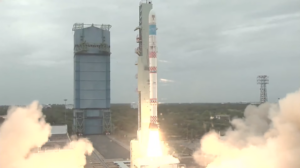
The Aug. 6 maiden flight of India’s newly developed Small Satellite Launch Vehicle (SSLV) went awry with “some data loss” that occurred in the terminal stage of the mission.
The post India’s new SSLV rocket suffers “data loss” in maiden flight; satellites’ status unaccounted for appeared first on SpaceNews.
India’s new SSLV rocket fails in first launch
Sunday, 07 August 2022 12:09
The Aug. 6 maiden flight of India’s newly developed Small Satellite Launch Vehicle (SSLV) went awry with “some data loss” that occurred in the terminal stage of the mission.
The post India’s new SSLV rocket fails in first launch appeared first on SpaceNews.
Entire NASA astronaut corps eligible for Artemis missions
Saturday, 06 August 2022 14:52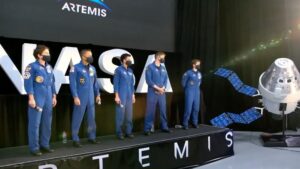
As NASA prepares to select the crew of the second Artemis mission, the agency’s chief astronaut says the entire astronaut corps, and not a previously announced subset, is eligible for that flight and future missions to the moon.
Italian satellite may fly NASA Earth science payload
Saturday, 06 August 2022 14:02
NASA is in talks with the Italian Space Agency to fly an Earth science instrument originally planned to go on a commercial smallsat.
The post Italian satellite may fly NASA Earth science payload appeared first on SpaceNews.
Space Development Agency to take another stab at space-to-aircraft laser communications
Friday, 05 August 2022 19:31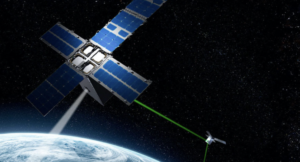
SDA is seeking proposals for a demonstration of laser communications between orbiting satellites and aircraft in flight
The post Space Development Agency to take another stab at space-to-aircraft laser communications appeared first on SpaceNews.
Aging Telesat satellite running out of fuel as projected LEO costs soar
Friday, 05 August 2022 19:22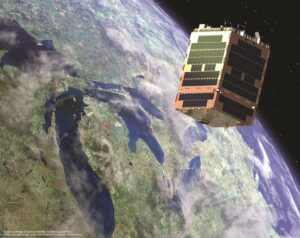
Canada’s Telesat is bracing for a revenue hit in 2023 after being forced to retire its Anik F2 satellite from full service three years earlier than planned.
The post Aging Telesat satellite running out of fuel as projected LEO costs soar appeared first on SpaceNews.
FCC considers opening up more Ku-band to non-GEO satellite operators
Friday, 05 August 2022 17:28
The Federal Communications Commission is considering opening up more Ku-band spectrum to Starlink and other non-geostationary satellite (NGSO) operators to improve broadband speeds.
The post FCC considers opening up more Ku-band to non-GEO satellite operators appeared first on SpaceNews.
10 years since landing, NASA's Curiosity Mars rover still has drive
Friday, 05 August 2022 15:30
Despite signs of wear, the intrepid spacecraft is about to start an exciting new chapter of its mission as it climbs a Martian mountain.
Ten years ago today, a jetpack lowered NASA's Curiosity rover onto the Red Planet, beginning the SUV-size explorer's pursuit of evidence that, billions of years ago, Mars had the conditions needed to support microscopic life.
NASA Goddard's 'Web Around Asteroid Bennu' shows in SIGGRAPH film fest
Friday, 05 August 2022 15:20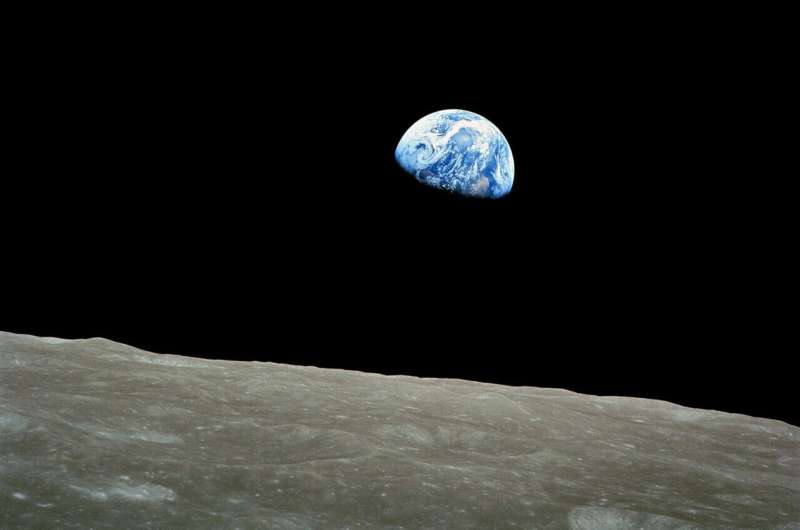
Alongside cultural heavyweights such as Disney's "Encanto" and Warner Brothers' "The Batman," a short film created at Goddard shares the screen next week at a festival honoring standout works of computer animated storytelling.
"A Web Around Asteroid Bennu" highlights the tricky navigation it took for NASA's OSIRIS-REx mission to collect a sample from asteroid Bennu in 2020. Produced at NASA's Goddard Space Flight Center in Greenbelt, Maryland, the video will show in Vancouver, British Columbia, on Aug. 8 in the SIGGRAPH computer graphics conference's Electronic Theater, a qualifying venue for Academy Award consideration.
OSIRIS-REx completed a series of complicated maneuvers around Bennu over the course of two-and-a-half years before collecting its sample with a touch-and-go, or TAG, maneuver and exiting orbit. The various segments of this web-like flight path were highlighted in full by data visualizer Kel Elkins, of NASA's Scientific Visualization Studio at Goddard.
"I started working with the trajectory data in 2015," Elkins said. "And when you first see an image of all the different maneuvers it looks like a rat's nest. But it was really exciting to see these complicated maneuvers in 3D space.
